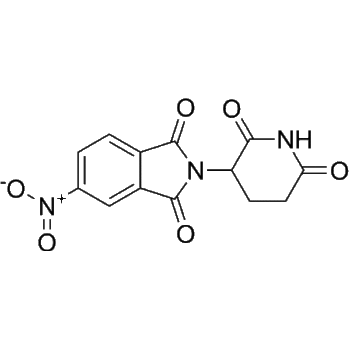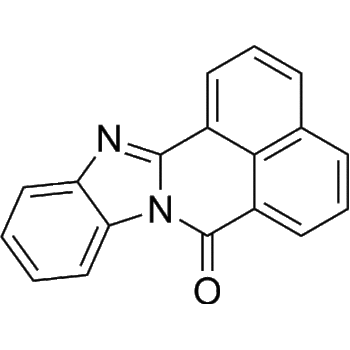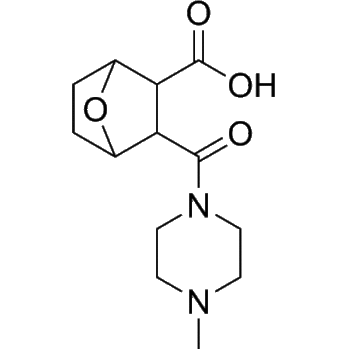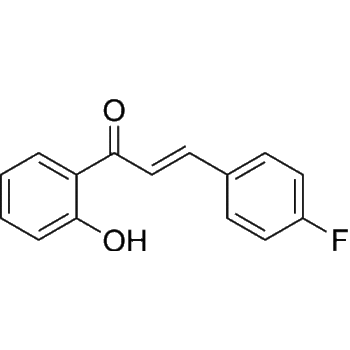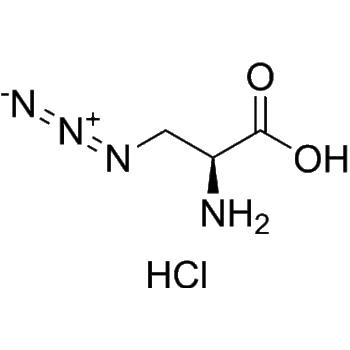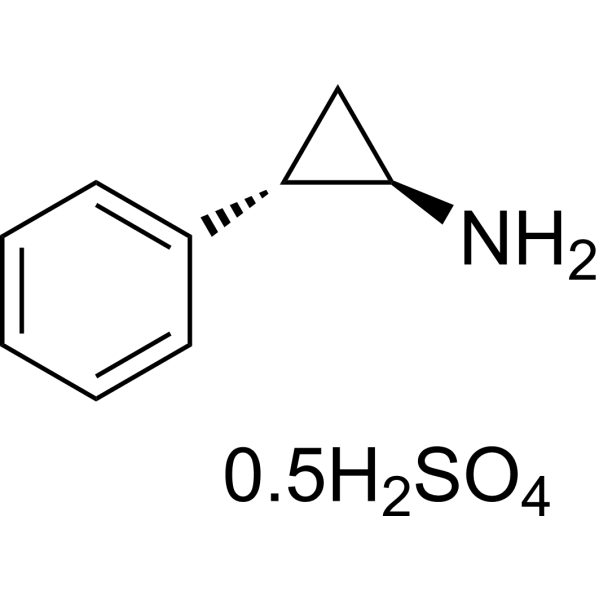
Download Files:
Tranylcypromine (hemisulfate)
SKU
HY-B1496-100 mg
Category Reference compound
Tags Epigenetics;Neuronal Signaling, Histone Demethylase;Monoamine Oxidase, Neurological Disease
$60 – $66
Products Details
Product Description
– Tranylcypromine (SKF 385) hemisulfate is an irreversible, nonselective monoamine oxidase (MAO) inhibitor used in the treatment of depression. Tranylcypromine hemisulfate is also a lysine-specific demethylase 1 (LSD1) inhibitor, suppresses lesion growth and improves generalized hyperalgesia in mouse with induced endometriosis. Tranylcypromine has antidepressant effects[1][2].
Web ID
– HY-B1496
Storage Temperature
– 4°C (Powder, sealed storage, away from moisture)
Shipping
– Room Temperature
Applications
– Neuroscience-Neurodegeneration
Molecular Formula
– C9H12NO2S0.5
Citations
– Biochem Biophys Res Commun. 2019 May 14;512(4):852-858.|Biol Reprod. 2020 Dec 1;103(6):1229-1237.|Biomaterials. 2018 Dec 6;193:30-46.|Patent. US20180263995A1.|Stem Cell Res Ther. 2020 Apr 16;11(1):157.
References
– [1]Caraci F, et al. Neuroprotective effects of the monoamine oxidase inhibitor tranylcypromine and its amide derivatives against Aβ(1-42)-induced toxicity. Eur J Pharmacol. 2015 Oct 5;764:256-263.|[2]Sun Q, et al. Tranylcypromine, a lysine-specific demethylase 1 (LSD1) inhibitor, suppresses lesion growth and improves generalized hyperalgesia in mouse with induced endometriosis. Reprod Biol Endocrinol. 2016 Apr 9;14:17.|[3]Tsutsumi T, et al. Potential Neuroprotective Effects of an LSD1 Inhibitor in Retinal Ganglion Cells via p38 MAPK Activity. Invest Ophthalmol Vis Sci. 2016 Nov 1;57(14):6461-6473.|[4]Romanczyk TB, et al. The antidepressant tranylcypromine alters cellular proliferation and migration in the adult goldfish brain. Anat Rec (Hoboken). 2014 Oct;297(10):1919-26.
CAS Number
– 13492-01-8
Molecular Weight
– 182.23
Compound Purity
– 99.94
SMILES
– N[C@H]1[C@H](C2=CC=CC=C2)C1.[0.5H2SO4]
Clinical Information
– Launched
Research Area
– Neurological Disease
Solubility
– DMSO : 5 mg/mL (ultrasonic;warming;heat to 60°C)|H2O : 12.5 mg/mL (ultrasonic)
Target
– Histone Demethylase;Monoamine Oxidase
Isoform
– KDM1/LSD1
Pathway
– Epigenetics;Neuronal Signaling
Product type
– Reference compound
Disclaimer: All products are for Research use only unless clearly stated otherwise on the product datasheet. Datasheets provided on the website are drafts for reference purpose only and you are requested to always refer to the hard copy included in the kit for your experimentation. Agdia Products are available for delivery only in Canada.
